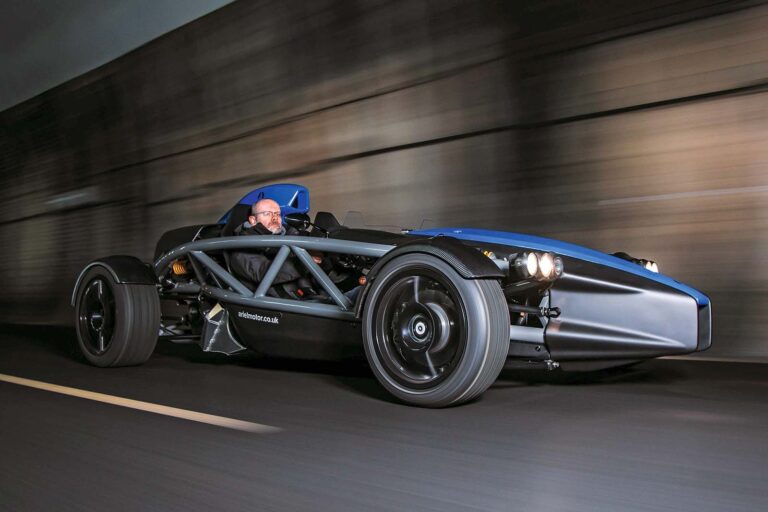The idea was that Prior and I – plus Ariel’s own technical expert, Kelvin Marshall – would do a series of coastdown tests in the tunnel, with and without screen, accelerating to 60mph, then coasting in neutral to 20mph and doing it again. The loggers would record variations in speed and time, assessing the effects by computer.
Prior and I both knew from experience how effective Ariel’s modest air dam ahead of the driver has always been at cutting turbulence around the driver’s head. Back in the 1990s, we were among the first to learn that a fist-sized flyscreen just ahead of the steering wheel made a surprising difference. But that was in an Atom 2 and now we’re up to the Atom 4R.
The first lesson at Catesby, which took minutes to learn, was about the effectiveness of the Atom’s latest cockpit screen. Without it, the 60mph-plus blast was hard to bear for more than a few hundred yards, even for bespectacled drivers like us. With the screen in place, though it looked small, Prior and I could each have driven 100 miles home.
And there were more lessons ahead. Catesby’s main boast is that it caters to the industry-wide need for repeatable, real-world aero testing.
Such conditions are difficult to achieve in conventional wind tunnels (where tethering systems intrude, wheels don’t spin, tyres don’t achieve their loaded shapes and engine exhausts and cooling systems aren’t active) or on open test tracks (where temperatures, pressures, gradients, variable road surfaces and weather intrude).


